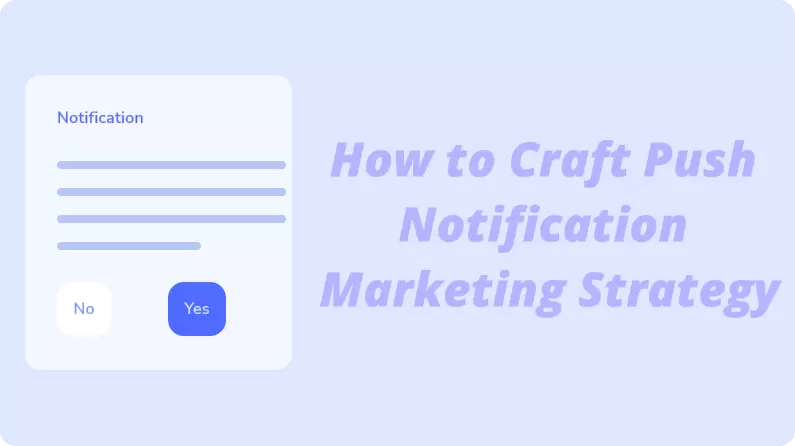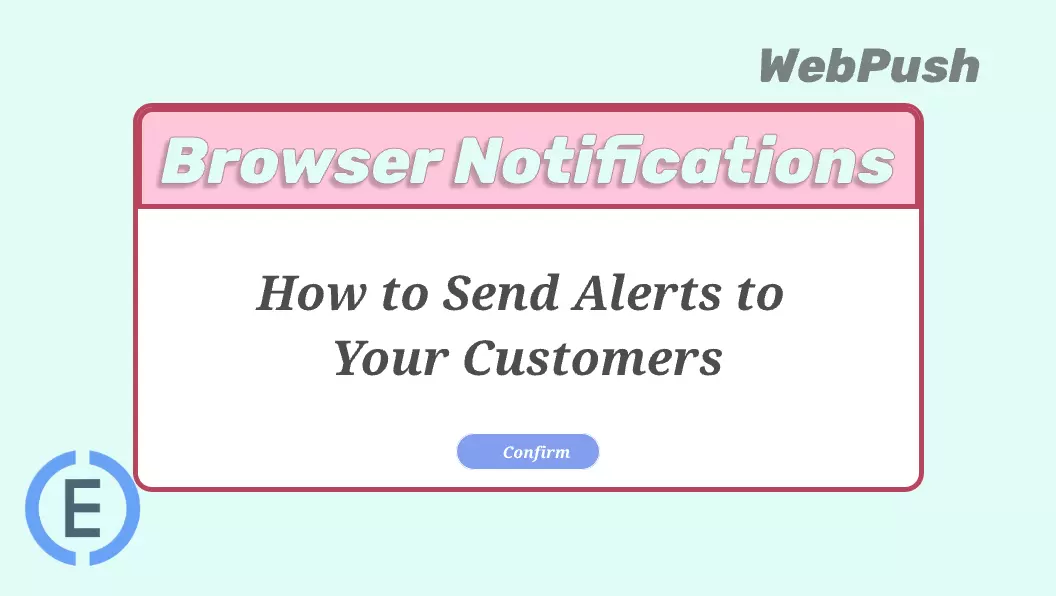In a modern digital world, where everything moves incredibly fast, it is critical to maintain contact with the users and be present at the right time and on the right channel. Automated notifications are changing the way businesses communicate, as people receive timely, relevant, and personalized messages on any platform.
This guide will discuss what automatic notifications are and how to use marketing tools to automate business.

Part 1: What is an Automated Notification?
An automated notification is a message triggered by specific user actions or predefined rules, rather than being sent manually. These messages can include alerts, updates, reminders, or promotional content. They are widely used across apps, websites, and devices to maintain communication without requiring human intervention each time.
For example, if a user adds a product to their cart but doesn’t complete the purchase, an automated notification can remind them to check out. This helps marketers drive conversions efficiently, saving both time and effort.
Part 2: Types of Automated Notifications
Automated notifications serve different purposes based on their timing and intent. Understanding these types helps businesses use them more effectively. Below are six main categories, each with a sample push message.
#1 Transactional Notifications
These are sent automatically after a user completes a key action, such as making a purchase or updating account info.
Example: “Thanks for your order! We’ve received your payment and will ship your items soon.”
Channels: Email, SMS, App Push
#2 Behavioral Notifications
These are triggered by user activity (or inactivity), helping to guide, re-engage, or remind users.
Example: “You left something in your cart. Complete your purchase now before it sells out!”
Channels: Web Push, App Push
#3 Scheduled Notifications
These automated notifications are sent at a fixed schedule or during certain intervals to keep users updated or engaged on a routine basis.
Example: “It’s time for your daily workout! Tap here to see today’s routine.”
Channels: Email, App Push
#4 Location-Based Notifications
These are triggered when a user enters or exits a specific location, using GPS or proximity data.
Example: “You’re near our store! Show this message at checkout to get 15% off today.”
Channels: App Push, SMS
#5 System Alerts
These notify users of account changes or technical updates that affect their experience.
Example: “Your password was changed successfully. Let us know if this wasn’t you.”
Channels: Email, App Push
#6 Promotional Notifications
Designed to advertise sales, offers, or special events. They are aimed at increasing traffic and sales.
Example: “Flash Sale! 30% off for the next 3 hours!”
Channels: Web Push, WhatsApp, SMS
Part 3: Benefits of Automated Notifications
In today’s age of hyper-personalization, automated notifications are not just helpful — they’re essential. With push notifications platform, businesses can turn generic messages into meaningful customer experiences. Here’s how automation adds value:
1 Operational Efficiency
Adios to manual campaigns. Automated notifications are delivered immediately according to set events, i.e.: a new sign-up, an abandoned cart, or a missed login. This minimizes work on the teams and releases resources into strategy and optimization.
2 Personalized Relevance
Notifications can be tailored based on real-time user behavior or profile data. Instead of sending the same message to everyone, businesses can target specific segments. For example, offering a discount only to users who haven’t made a purchase in the past 7 days.
3 Improved Engagement and Conversions
When the users get the right message and at the right time, they tend to act. Auto notifications improve key metrics like open rates and click-throughs. Timeliness plays a key role here — a reminder delivered just minutes after a user abandons a cart can make the difference between a lost and recovered sale.
4 Cost-Effective at Scale
Automating campaigns eliminates the need to have huge marketing teams while maintaining high communication quality. Campaigns can run continuously based on predefined rules, reaching thousands or millions of users with minimal manual input. This reduces operational costs while increasing marketing efficiency.
5 Enterprise-Grade Scalability
As your audience grows, automation ensures notifications are delivered quickly and reliably, even at high volumes. Whether you're reaching hundreds or millions, the system adapts smoothly without compromising performance, making it suitable for businesses of all sizes.
Part 4: Best Practices for Using Automatic Notifications
Among all automated notification channels, push notifications are uniquely positioned for real-time, high-visibility communication. Delivered directly to a user’s device, they require no inbox and no delay—making them ideal for timely updates, reminders, and personalized nudges.
Because of their immediacy and impact, push notifications deserve special attention. In this section, we’ll focus specifically on best practices for using automated push notifications in a way that respects user experience while maximizing engagement and results.
-
Go Beyond Basic Personalization
Don’t stop at using the user’s name. Tailor notifications based on real behavior, preferences, and purchase history. For example, send a discount on an item the user viewed but didn’t buy.
-
Time It Right
Timing is critical. Send notifications when users are most likely to engage. Use data or time zone settings to schedule messages during active hours, especially for time-sensitive campaigns.
-
Avoid Notification Overload
Being overwhelmed with automated notifications will cause burnout. Put some boundaries, e.g., no more than 2 messages a day, and focus on the quality more than on the number of messages. Allow users to choose how often they want to receive notifications.
-
Test and Optimize
Test your messages by analyzing the various versions of your messages (A/B). Offers, button text, tone, and timing of tests. That is how minor changes yield big performance improvements.
-
Respect Consent and Compliance
Make sure that users have consented to get notifications. Dig into the privacy laws such as GDPR or CCPA by providing clear preferences to control or unsubscribe notifications.
-
Track and Adjust Based on Performance
Monitor performance metrics like open rates, clicks, and conversions. Use this data to improve your message content, timing, and audience targeting over time.
-
Use Rich Media When Possible
Make your notifications visually engaging by including images, emojis, or call-to-action buttons. This works especially well on app push and messaging platforms. However, make them light and Wi-Fi friendly.
-
Sync Notifications Across Channels
Deliver a consistent experience by syncing notifications across push, email, SMS, and chat apps. For example, if a user ignores a cart reminder via push, follow up with an email.
Part 5: Automated Push Notification Use Cases by Industry
Automated notifications can be adapted to a wide range of industries. By responding to user actions in real time, they help businesses stay connected, increase engagement, and improve results. Here are common use cases across different sectors:
1 E-Commerce
Online stores use notifications to recover abandoned carts, confirm orders, and promote offers. For example, a shopper who leaves without buying may receive a reminder with a limited-time discount.
2 Finance
Banks and financial apps use alerts for transaction updates, low balances, and suspicious activity. Scheduled reminders for bill payments or loan renewals help users manage their account.
3 Healthcare
Medical providers and wellness apps send reminders for appointments, medications, and healthy routines. A user might get a daily message to take medication or confirm a doctor visit.
4 Media & Entertainment
Streaming services use notifications to promote new releases, trending content, or personalized recommendations based on viewing history.
5 Education
Learning platforms use notifications to keep students engaged. These include lesson reminders, new content alerts, or messages celebrating progress.
6 Travel & Hospitality
Airlines and hotels send automated messages for check-in, flight changes, or booking confirmations. Travel apps may offer local tips or promotions based on location.
7 Telecom
Telecom providers use automated messages to confirm top-ups, notify about data limits, or promote new plans. They also remind users of upcoming payments or service renewals.
8 Food and Beverage
Restaurants and delivery platforms use notifications for order confirmations, real-time delivery updates, and personalized offers. A user might receive a lunch deal right before noon or a reminder to reorder a favorite mealt.
Part 6: Automate Push Notifications with EngageLab
EngageLab is an all-in-one, omni-channel customer engagement platform that helps you connect with users via OTP, Email, SMS, WhatsApp, App Push, Web Push, and more.

A multichannel solution for any business.
- High Delivery Success: EngageLab ensures high delivery rates by using multiple channels like FCM, APN, Huawei, and more—reaching up to 40% more users than basic systems.
- Rich Notification Formats: Send banners, full-screen alerts, images, or pop-ups—designed to stand out while keeping data usage low.
- Precise Targeting: Reach the right users with precision. Target by tags, device type, user segmentation and more.
- Performance Insights: Track delivery and engagement in real time. Quickly see what works and refine your messaging.
 The Newly Released Function
The Newly Released Function
EngageLab Marketing Automation (MA) helps businesses automate repetitive marketing tasks, enabling efficient and personalized customer engagement through data-driven triggers.
EngageLab's push notification automation allows businesses to trigger messages based on user behavior, preferences, or lifecycle events. It boosts engagement, improves retention, and drives conversions with real-time notifications sent directly to users'devices or browsers.
Part 7: FAQs About Automated Notifications
1. Can I automate notifications based on user behavior?
Yes, absolutely. Automated notifications can be triggered by specific user actions, such as signing up, making a purchase, leaving a cart, or becoming inactive. Behavior-based triggers help ensure your message is timely and relevant.
With EngageLab, you can set up these triggers easily using a no-code journey builder that maps real-time user events to automated push, email, or in-app messages.
2. Do I need to write code to automate push notifications?
Not necessarily. Many platforms offer visual tools to automate push notifications without requiring code.
3. Is it possible to stop notifications after a user converts?
Yes. Most automation platforms allow you to set conditions or exit rules that stop the notification flow once a user completes a desired action. This ensures that users aren't annoyed by irrelevant follow-ups.
4. How many users can I target at once?
You can target thousands or even millions of users at the same time, depending on the platform's scalability. Most push notification systems are built to handle high concurrency.
EngageLab supports enterprise-grade delivery infrastructure, so whether you're sending to 100 or 10 million users, your messages will go out reliably and without delay.
Conclusion
Push notifications are one of the most effective ways to reach users instantly. When automated, they become even more powerful—delivering timely, relevant messages without manual effort.
By using automation to trigger push notifications based on user behavior, businesses can improve engagement, drive conversions, and save time. With the right tools, like EngageLab, it’s easy to build smart, scalable push campaigns that work in the background while you focus on growthy.
Want to learn more or get started? Visit EngageLab today.








